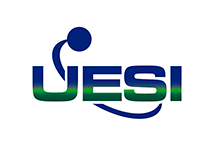Beaumont, Texas, stands at the junction of busy waterways and major industry. From petrochemical plants along the Neches River to municipal bridges and stormwater systems, the region relies on regular underwater inspections to stay safe, efficient, and compliant. Yet persistent myths about ROV inspection services still cause hesitation among some asset owners and contractors. Clearing up these misconceptions is essential for anyone responsible for protecting valuable infrastructure and controlling long-term costs.
Myth 1: ROVs Are Only for Deep-Sea or Offshore Use
Reality: Modern ROV inspection services work as effectively in a shallow drainage canal as they do in an offshore oilfield. While early remotely operated vehicles gained fame exploring the ocean floor, today’s systems handle a wide variety of tasks—from refinery intake pipe checks to bridge piling evaluations in local rivers.
In Beaumont, infrastructure often spans both industrial and municipal needs. ROVs can be launched from small workboats and maneuver through confined or shallow areas with impressive agility. This flexibility makes them ideal for remote underwater visual inspections where sending divers would be risky, expensive, or impractical.
Myth 2: ROV Inspections Are Less Reliable Than Human Divers
Reality: Far from less reliable, ROV inspections frequently deliver more consistent and reviewable data than human divers. Equipped with high-definition cameras, precision thrusters, and integrated sensors, ROVs capture stable, crystal-clear images even in low-visibility water.
Every second of the dive is recorded in real time, allowing engineers and regulators to revisit footage, take measurements, and perform side-by-side comparisons months or years later. Divers can miss tiny defects or tire quickly, but subsea ROV surveys provide repeatable results that remain available for long-term maintenance planning and regulatory compliance.
Myth 3: ROVs Cannot Handle Complex or Dirty Water Conditions
Reality: Beaumont’s waterways are often turbid, with fluctuating salinity and strong currents. Some assume these conditions make remotely operated vehicle evaluations impractical. Modern ROVs are built for exactly these challenges.
Advanced lighting systems, laser scanners, and sensitive cameras capture usable data even in murky water. Many ROVs integrate sonar or multibeam imaging to create accurate 3D models when visibility is near zero. This technology lets inspectors detect corrosion, structural deformation, or sediment buildup in environments that would overwhelm a diver.
Myth 4: The Tether Is a Weakness
Reality: Some observers view the tether that connects the ROV to the surface as a flaw, but it is actually a key strength. The tether provides continuous power and transmits real-time data to operators, ensuring steady communication and immediate decision-making.
Far from limiting mobility, a properly managed tether guarantees that high-resolution video, sonar data, and sensor readings reach engineers topside without delay. In challenging Beaumont waterways, this instant feedback allows teams to adjust course, focus on suspicious areas, and confirm findings before leaving the site.
Why These Myths Persist
Many misconceptions date back to the early days of ROV technology, when equipment was bulky, camera quality limited, and pilot training still developing. Today’s systems are far more capable. Operators receive specialized instruction in navigation, sensor calibration, and data integration, allowing them to deliver reliable and repeatable inspections in both industrial and natural settings.
Still, myths linger—often shared by those who have not worked with modern ROV inspection services or who experienced outdated equipment. Dispelling these notions is critical for Beaumont’s industries, which depend on accurate underwater evaluations to maintain safety and avoid costly surprises.
The Value of Expert Partners
Technology alone isn’t enough. To get the best results from remote underwater visual inspections, asset owners need an experienced team that understands local conditions. That’s where Underwater Engineering Services, Inc. (UESI) excels.
Comprehensive Capabilities: UESI offers marine construction, commercial diving, and advanced ROV inspection services under one roof. From permitting and mobilization to detailed reporting, they manage the process end to end, reducing delays and ensuring consistent quality.
Advanced Technology: UESI’s fleet supports subsea ROV surveys and remotely operated vehicle evaluations with high-definition cameras, sonar, and laser measurement tools. These integrated systems deliver actionable data even in Beaumont’s low-visibility waterways.
Experienced Personnel: UESI’s trained pilots and engineers specialize in challenging environments. Their expertise in navigation, data integration, and sensor operation ensures each inspection provides a reliable foundation for maintenance and repair planning.
By combining engineering insight with state-of-the-art equipment, UESI bridges the gap between data collection and real-world remediation, giving asset owners the full picture needed to protect infrastructure and budgets.
Taking ROV Inspection Services Myths Down in Beaumont, TX
For Beaumont’s petrochemical facilities, municipal water systems, and shipping operations, underwater inspections are a non-negotiable part of maintenance and regulatory compliance. Clinging to outdated myths only increases risk and cost. The truth is clear: ROV inspection services provide unmatched reliability, precision, and safety when performed by skilled professionals using modern technology.
Whether inspecting a refinery’s intake pipeline, evaluating a bridge foundation, or surveying a storage tank, partnering with experienced providers like Underwater Engineering Services ensures that remote underwater visual inspections, subsea ROV surveys, and remotely operated vehicle evaluations are executed efficiently and thoroughly. By moving beyond misconceptions, Beaumont’s infrastructure owners can safeguard critical assets and the surrounding environment—today and for decades to come.




